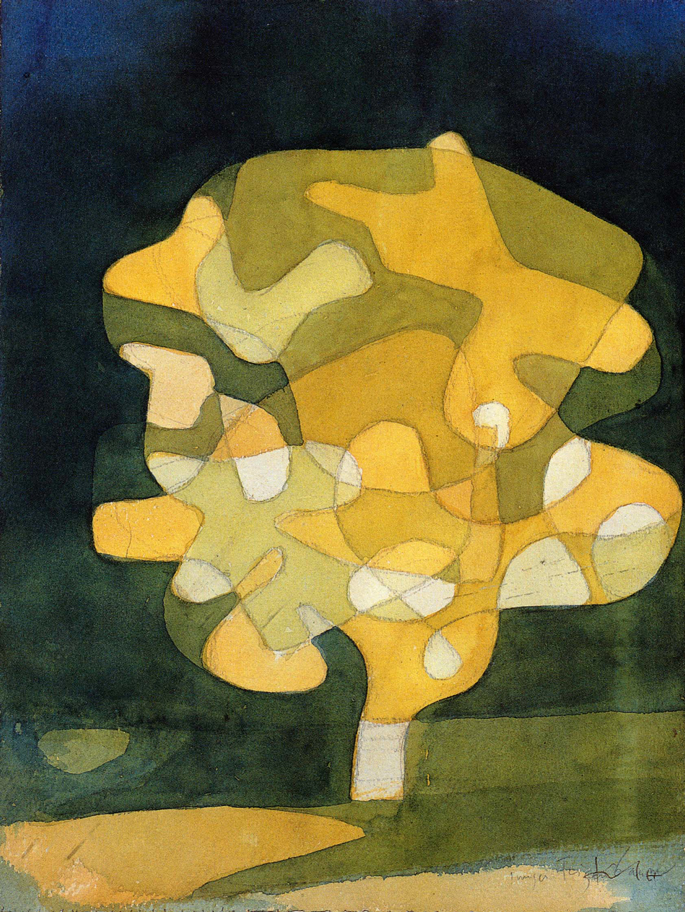“The initial disorientation in the face of nature is explained by the fact that we begin by seeing only its latest ramifications, without going back to the root. However, once one has realized it, he can recognize even in the most distant leaflet the manifestation of the only law that regulates everything and take advantage of it” (Paul Klee, Diaries, n. 536).
After the exhibition dedicated to the relationship between the work of Alberto Giacometti and archaic statuary, the MAN_Art Museum of the Province of Nuoro continues its program aimed at analyzing little-researched aspects of the production of the most important artists of the 20th century with an exhibition dedicated to Paul Klee (1879-1940) .
Unpublished in Sardinia, Klee is one of the most complex and original authors of the last century. With this exhibition, created by the MAN Museum with the contribution of Autonomous Region of Sardinia, the Province of Nuoro and the Banco di Sardegna Foundation, with the patronage of the Swiss Embassy in Italy, curated by Pietro Bellasi and Guido Magnaguagno, with the scientific coordination of Raffaella Resch, we intend to explore a fundamental element in the artist’s work, namely the perception of the presence of a vital, generative principle inherent in the matter of things.
In a specific sense Klee never spoke of “animism”, yet his work appears permeated with one animated spirit felt throughout the material reality and evoked from action creativity of the artist . “Superior creature” (Diaries, n. 660), the artist, through his own vivifying gaze, brings to light the generating element present in the different worlds that populate the cosmos, hidden beneath the surface of things. Let them be men, children, animals, objects, landscapes or architecture, Klee’s worlds all obey the same law of nature, which the artist investigates and imitates.
A single vital principle governs the entire natural order, from large things to infinitesimally small things. This principle seems to be evident in many of the artist’s works, particularly in the drawings and watercolors of the 1920s and 1930s. Works like Feigenbaum ( FIG ), of 1929, or Im Park ( In the park ), from 1940, present in this exhibition, or even the important painting Wohin? (Where? ) from 1920, coming from the collections of the City of Locarno, exhibited in 1937 in the “Degenerate Art” exhibition, organized by the German National Socialist regime.
There representation of the animal world offers a series of parables, moral fables, where the animal is elevated to the role of human being, in its vices and virtues. Here it is in the drawing Tierfreundschaft ( Friendship between animals ) from 1923, for example, a dog and a cat good-naturedly accompany each other on a quiet walk, embodying the sense of friendship that can arise between two human beings.
The study of architectural works reveals Klee’s interest in shape perception and the understanding of the organic element, alive, inside it, evident in some watercolors such as Americanisch – Japanisch (American – Japanese ), created in 1918, where the icon of the eye is flanked by towering stylized buildings. “Once the numerical element of the concept of organism is understood,” writes Klee, “the study of nature proceeds more quickly and with greater exactness” (Diaries 536).
But the generative principle inherent in all things can be seen above all in those works which, in a declared manner, evoke or imitate the world of childhood , as in Hier der bestellte Wagen! – Here is the cart requested, from 1935, but also in the very fine painting Getrübtes – Troubled, from 1934, coming from the collections of the GAM of Turin, or even in those works where the figures are represented with simple, stylized features, in the manner of children, as in the painting Gebärde eines Antlitzes (Expressions of a face), from 1939, coming from the collection of the Museum of the Biella Territory.
Organic life forms and spirits of matter animate the different subjects present in Klee’s works. An image that seems to find a formal synthesis in a work like Figural Blätter ( Figured leaves ), a work from 1938 where some anthropomorphic figures , like small fetuses, live curled up inside incubator leaves.
Artist immersed in the spirit of his time, where sensational scientific discoveries take place , Klee understands the upheavals caused by the theories of relativity and quantum physics , as well as the evolution of psychoanalytic studies , reworking them independently within a magical-phenomenal vision of the universe.
***
The exhibition will be accompanied by a catalog published by Magonza Editore with essays by Pietro Bellasi, Guido Magnaguagno and Raffaella Resch, as well as the complete reproduction of the works on display and a bio-bibliographic apparatus.
Pietro Bellasi he is a scholar of anthropology of art, he taught at the University of Bologna and at the Sorbonne, he is the curator of various exhibitions and catalogues, including “Giacometti and the archaic”, Nuoro 2014; “Body, automatons and robots”, Lugano 2010, “The Giacomettis. The valley and the world”, Milan and Mannheim, 2000-2001; “A devil by the hair”, Bologna 2005; Tinguely and Munari, La Spezia, 1994
Guido Magnaguagno , Swiss art historian; he was deputy director of the Kunsthaus in Zurich and for many years director of the Tinguely Museum in Basel. He has curated numerous contemporary art exhibitions and is an expert in Swiss.
Raffaella Resch he organized and coordinated numerous exhibitions and catalogs at the Antonio Mazzotta Foundation. He currently collaborates with various institutions and artists as a freelancer.


